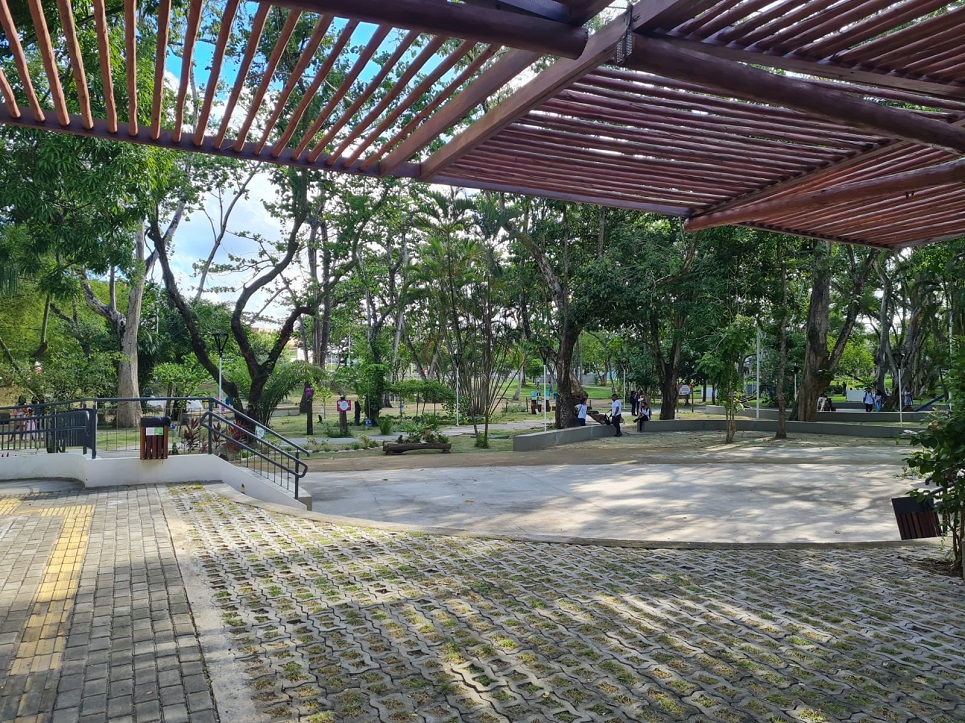
Three recommendations to improve public spaces in cities
We tend to think of public spaces as only the spaces of permanence or green areas of a city, such as squares, parks or gardens. However, public spaces go beyond that description, since they also include areas in which we move about and travel through, such as streets or sidewalks. These spaces have played a strategic role in the current Covid-19 health crisis following their adaptation or conversion into gyms, theaters, playgrounds or outdoor social meeting areas, among many other uses.
In Latin America and the Caribbean, most cities are divided between spaces of movement and spaces of permanence. This fragmentation is due to several reasons, one of which has to do with the management of these spaces, since in many municipalities they are managed by various offices or administrations. One of the factors that exacerbates this fragmentation in the territory is the intensive use of private automobiles, which has led to urban roads being primarily used as spaces for vehicles to circulate, rather than more integrally as public spaces for people. The lack of a systemic and integrative vision of public spaces limits an effective approach to some recurrent problems in Latin American and Caribbean cities, such as the physical deterioration of these spaces, which results in further problems. The fact is they encourage social conflicts, since rundown or abandoned spaces are viewed as unsafe, making people fear becoming victims of crime or violence, especially women and other vulnerable groups. They can also impact the environment when their state of deterioration leads to a loss of biodiversity or increased pollution.
Fortunately, many cities are working to reverse this state of affairs and promote urban development that not only includes the leisure and recreation functions given to public spaces, but also incorporates environmental functions that promote harmony with nature and respect for biodiversity. There are also social functions, so that all users who inhabit, work and visit cities can access and enjoy them safely. Finally, there are productive functions, which allow for multiple daily activities, whether paid or unpaid, productive or care related.
Below, we will share three recommendations for incorporating attributes that help create quality public spaces by adding comprehensive street concepts that emerged from the rezoning of Horto Forestal, an area of approximately four hectares that has been completely transformed and is now part of the municipality of Camaçari’s “Program for Integration and Urban, Social and Environmental Development” in Brazil, and financed by CAF Development Bank of Latin America.
- Improve environmental conditions by expanding urban green infrastructure. Conserving and creating a network of natural and semi-natural areas with environmental elements provides ecosystem services and also improves public health, since it not only reduces pollution levels by capturing certain air pollutants, but also results in attractive spaces for physical and recreational activities. The increase in green spaces also results in lower rates of depression and psychological stress for those who use and enjoy them. In addition, the incorporation and recovery of urban green areas also reduces the effects of climate change and improves adaptation to environmental changes, thereby increasing the resilience of the city.
- Provide elements that turn public spaces into comfortable and attractive places for different communities. To accomplish this, it is possible to incorporate certain design parameters that offer universal access and promote integral spaces, where infrastructure and the selection of urban furniture are accompanied by actions that comprehensively observe the principles of equity, social inclusion and gender. Some actions involve considering an arrangement that allows for interaction between adults without interrupting the care of children, or how to encourage physical activity in women and girls by means of multipurpose courts for a variety of sports, as well as informal or less structured games, among other activities.
- Test the design and management of our streets, ensuring versatility and safety for a wide range of users, and their different forms of mobility. This is the basic principle of the complete streets concept. A integral street allows all sorts of transportation, movement and being to coexist in the same space. By keeping all this in mind we can project what type of furniture (benches, waste containers, etc.), equipment (stops, lighting, etc.) and pedestrian or bicycle infrastructure (signage, speed reducers, sidewalk width, etc.) the city’s avenues or streets would require.
These recommendations are just a few examples of the myriad of points that merge in regard to public spaces. They allow us to think of actions that promote synergy between them, through a combination of disciplines that help public spaces fulfill their dual function of permanence and use for travel. CAF walks cities through the design, execution and management of urban development projects that seek to materialize this vision of public spaces.
